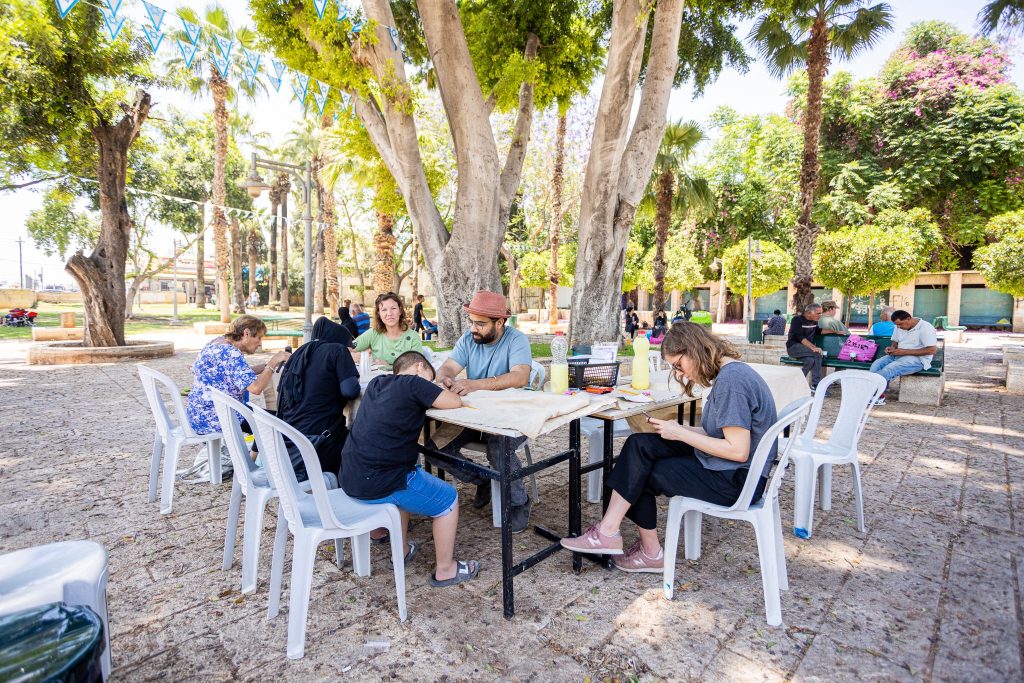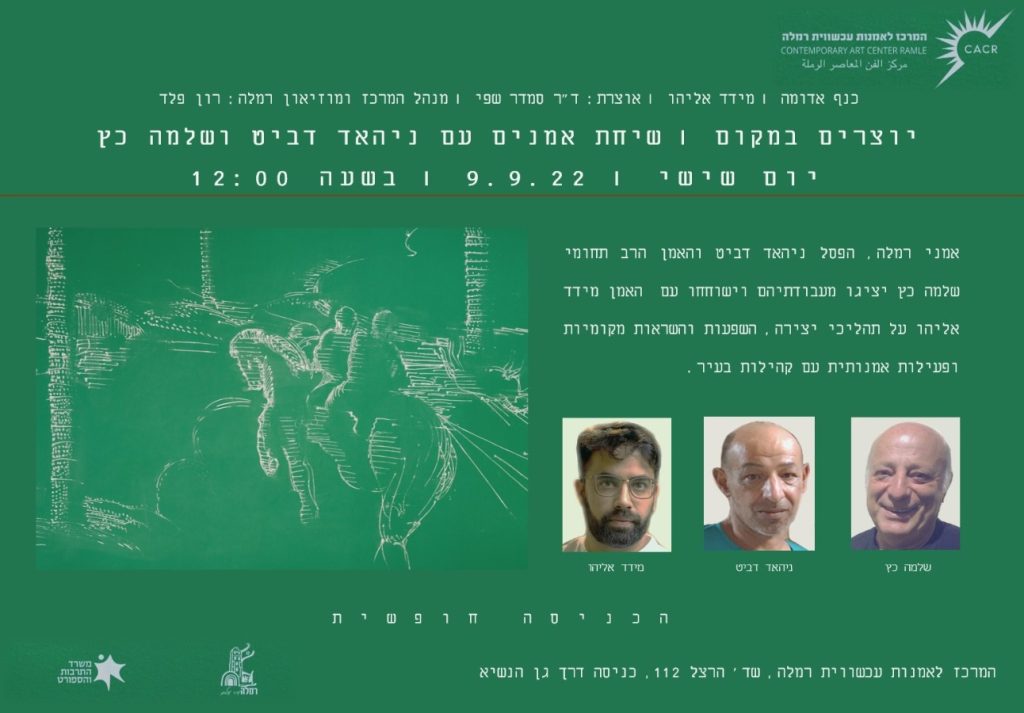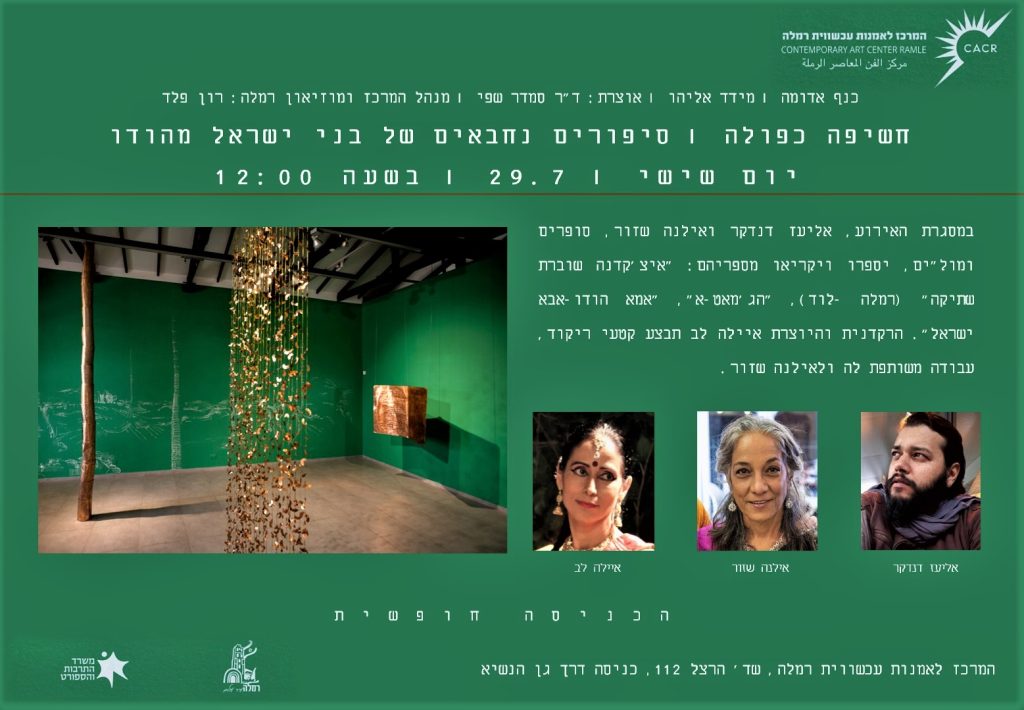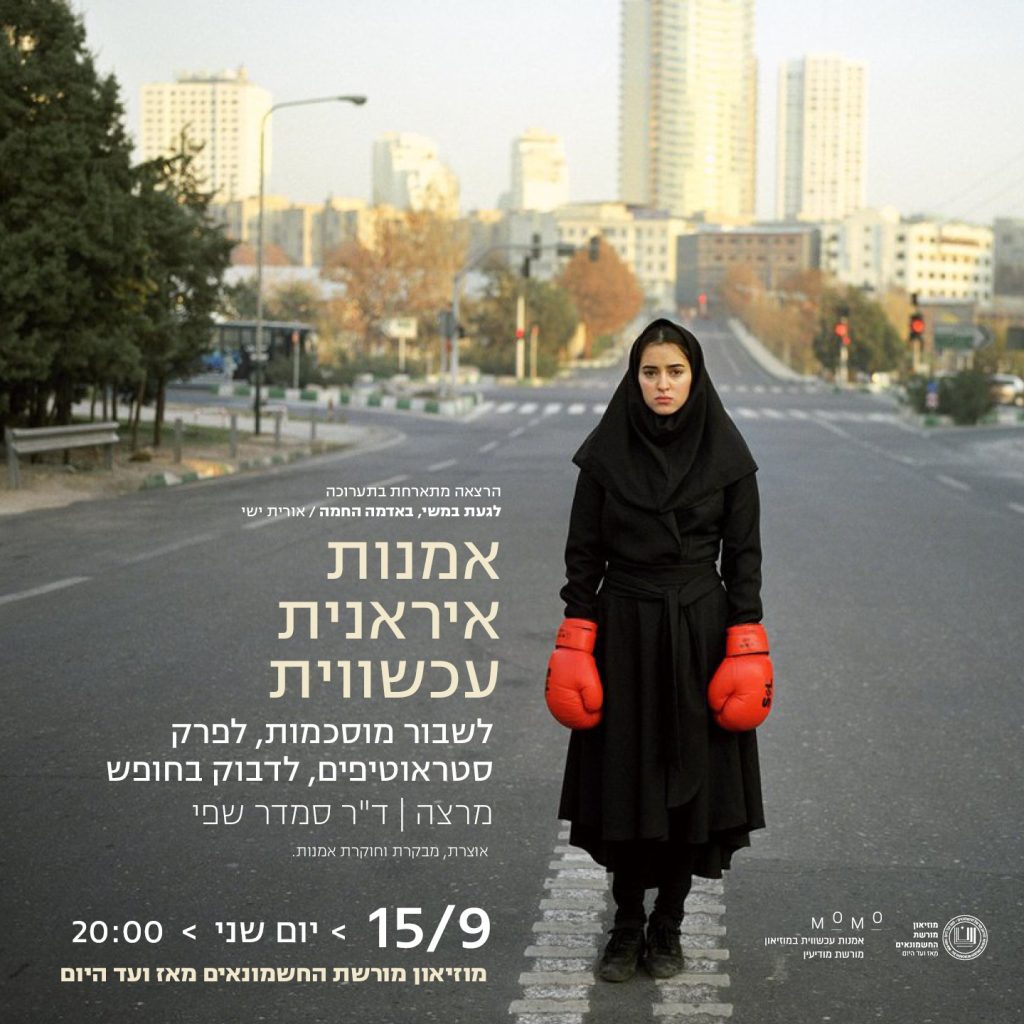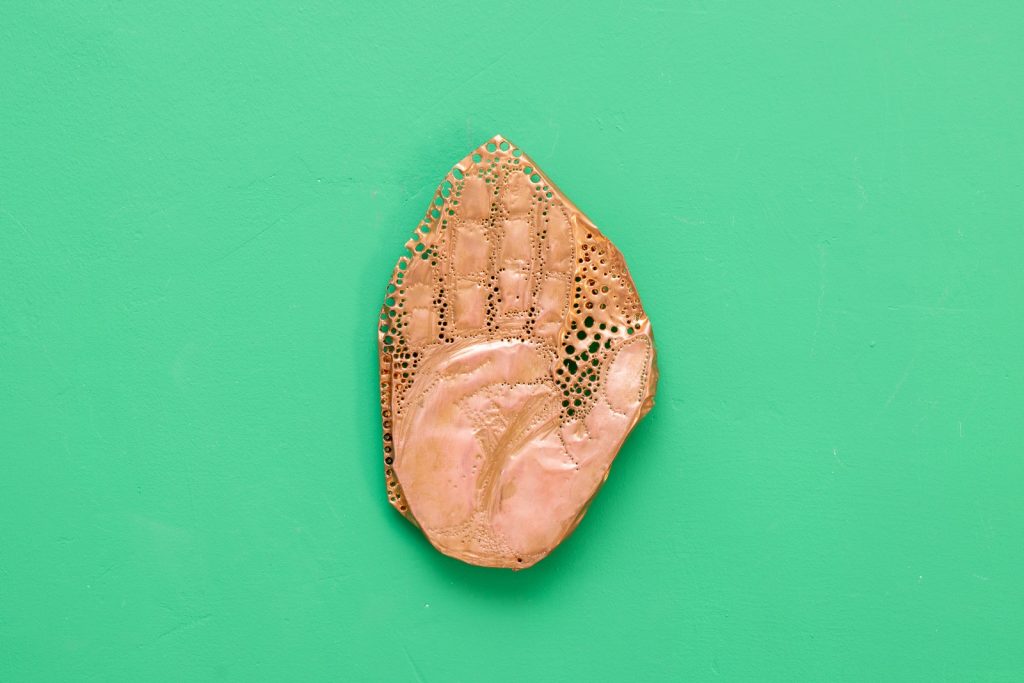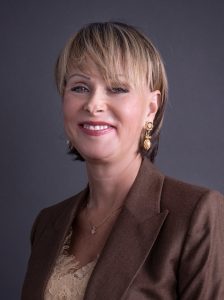For English click here
כנף אדומה
אוצרת: ד”ר סמדר שפי
כנף אדומה”, תערוכת יחיד של מידד אליהו, עוסקת בנוכחויות וברבדים של התרבות ההודית ברמלה ודרך אלו תוהה על מהותה של הגירה, של הסתגלות ועל היחס בין זיכרון לבניית הווה ועתיד.
בתערוכה שני חללים. בחלל הגדול הקידמי – מיצב שמקיף את הצופה בצבע ותנועה, ואליהו נוגע בו ברגשות מצועפים, בזיכרונות, ברגישויות ובשתיקות. האישי והציבורי משתרגים, הקרוב והרחוק נפגשים, והמיצב והמהלכים והמהלכות בתוכו הופכים שותפים למסע. החלל השני כולל מערך ישיבה מותאם לסדנאות ומדפים עליהם יצירות של אליהו לצד יצירות משתתפי סדנאות. בחלל הסדנא נוצר מקום לחשיבה משותפת, להתבוננות.
מפל שרשראות גזרי נחושת בצורת אגוז קשיו או דמעות, מתקשר לזיכרון ילדות של אליהו, וגעגוע של אליהו לטעם הקשיו שהיה אביו מביא לו משוק רמלה. על קיר ירוק גדול מצויר נוף דימיוני בו בניין מפעל “נשר” מופיע לצד שדרת עצי דקל ערופי ראש, ומולו קיר נוסף עם עבודות נחושת גדולה העשויה לפי כפולת עמודים ממחברת. בנחושת רקועים טקסטים בעברית, אנגלית ומלאיאלאם (השפה הרווחת במדינת קרלה בהודו) והיא שואבת השראתה ממחברת שהייתה שייכת לתפארת אסתר ז”ל ,אמה של ציפורה מאיר, חברה פעילה בקהילה של יוצאי הודו ובחיי התרבות של העיר רמלה . במחברת, משנות ה-70, נאספו מושגים, כתובות ומתכונים המתעדים את המעבר מתרבות ושפה של מקום אחד לאלו של מקום אחר. יצירת המחווה למחברת בנחושת, מאזכרת את לוחות הנחושת העתיקים שעליהם נחרטו זכויות היהודים בקרלה, מחוז בדרום הודו, על ידי מנהיג אזורי, מהראג’ה, לפני מאות שנים. וכך חפץ היסטורי יקר ערך בעל חשיבות סימבולית רבה לקהילת יהודי הודו מרחף כנוכח לא נוכח בתערוכה, מהדהד במחברת ההיא עדות ליכולת לשזור מסורת ושינוי. השימוש של אליהו בנחושת מחבר גם הוא הקשרים – האמנות ההודית בה נעשה שימוש נרחב בחומר זה וגם זיכרונות של משתתפים רבים בסדנאות וחוגי מלאכה בשנות ה-60 וה-70 בהם ריקוע נחושת היה טכניקה נפוצה. כשהאור משתבר על מפל הקשיו ועל מחברת הנחושת, התערוכה משקפת במידה חלקית את סביבתה, כמעין מראה לא צלולה, משאירה מקום לערפל ולחלומות שמעבר לשיקוף מציאות.
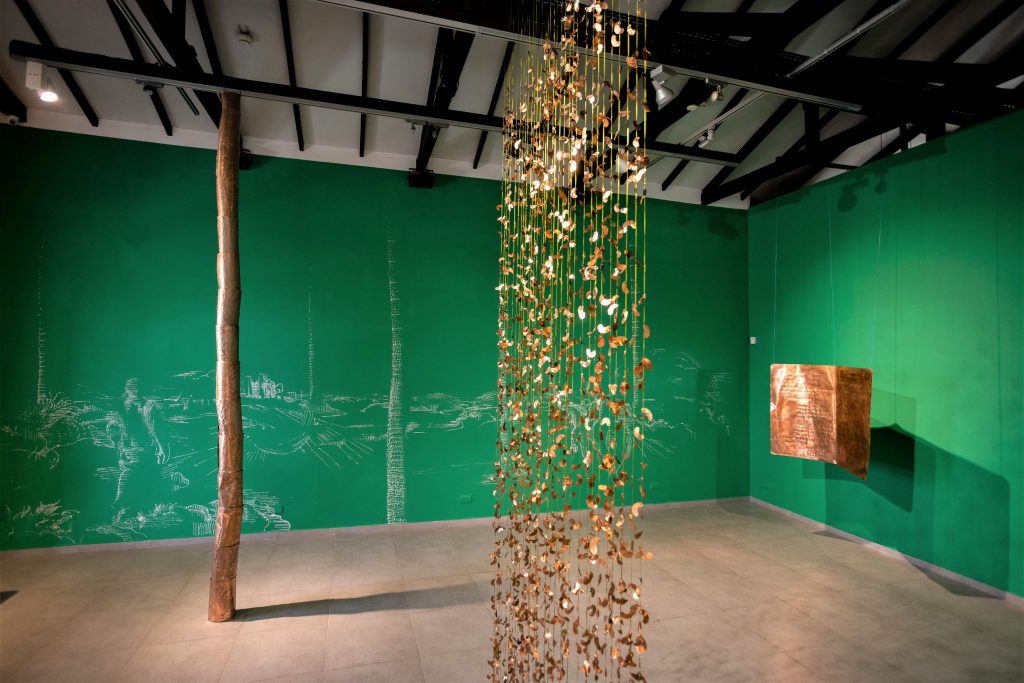
ב”כנף אדומה” אליהו מרחיב ומסכם מהלך רעיוני ממושך אותו הציג בתערוכות בארץ ובהודו, ולמהלך זה התווספה עשייה יצירתית-חברתית עם קהילות שונות ברמלה. החיבור בין העשייה האינדיבידואלית למהלך חברתי יצרה תערוכה שמועד פתיחתה לא סימן סוף פרויקט אלא ראשית מהלך נרחב של סדנאות ומפגשים במרכז.
בשונה מקהילות יהודיות רבות אחרות, הגירת הקהילה ההודית לארץ לא נבעה מרדיפות, אלא מתוך רצון להצטרף לתחייה היהודית המיוחלת. אנשי הקהילה היו משולבים בחברה הרב תרבותית והסובלנית של הודו במאה הקודמת. העלייה לארץ נעשתה בכמה גלים, המוקדם בהם בסמיכות לשחרור הודו מהקולוניאליזם הבריטי. משפחתו של אליהו עלתה בגל זה.
אליהו, שנולד וגדל במושב מסילת ציון, מטמיע ביצירתו את סיפורי דור ההורים שהיגר מהודו. עיסוקו בנושא קיבל ביטוי ראשון במיצב “מחול השותלים” אותו הציג ב-2016 בתערוכה “מארג: זיקות למסורות באמנות המערב בציור עכשווי בישראל ” (אצרה ד”ר סמדר שפי) במוזיאון פתח תקווה לאמנות. ב”מחול השותלים” יצר אליהו פרסקאות, מדיום המזוהה עם כנסיות וארמונות מחד ועם פרויקטים של אמנות סוציאליסטית מאידך, כדי לדבר על שנותיהם הראשונות של מושבי העולים בשנות החמישים, מושבים שהקמתם נכפתה, לעיתים, הר כגיגית, על המתיישבים, פרק שלא התקבע באתוס הישראלי.
ב-2020, ב”סף”, מיצב במוזיאון וילפריד ישראל לאמנות וידיעת המזרח (אצרה שיר ימגוצ’י), הציג אליהו עבודות המבוססות על צילומי ארכיון של עולי קוצ’ין מתקופת עלייתם לארץ בתחילת שנות ה-50.
ב”כנף אדומה” ברמלה אליהו מציף את המחיקה וההדחקה של התרבות היהודית-הודית בעקבות ההגירה לישראל, ודרך התערוכה מתייחס לשינוי שחל בשנים האחרונות עם כניסת דור חדש של אקטיביסטים המאירים את איכויות התרבות שהביאו הוריהם ואת התרומה והמקום שלהם בתרבות הישראלית היום. “כנף אדומה” עוסקת בבניית תודעה קהילתית במקביל למסע הפנימי האישי.
במסגרת הפעילות לפני התערוכה אליהו, אמן-אקטביסט, יצר בסטודיו במתחם המוזיאון העירוני המצוי במרכז הפועם של העיר, בין השוק, המסגד ומשרדי הממשלה. בסדנאות במרחב הציבורי, במרכזים קהילתיים ובבתי ספר יצר יחד עם משתתפות ומשתתפים גלופות נחושת והדפסים שחלקם נוכח במרחב התערוכה.
בסדנאות במרכז ברמלה השתתף קהל מגוון – מועדון גמלאים של מרכז הסעדה בית אסיה קוגן, תלמידים מרמלה, אקטיביסטים בקהילה היהודית -הודית, אמנים עמיתים וגם קהל מזדמן. הארכיון המתפתח לאורך התערוכה ממשיך מהלכים של אליהו שהחלו בפרויקטים שהציג בביאנלה הבינלאומית בקוצ’ין – מוזיריס. ב-2016 הציג בביאנלה את “תיבת תעודות” (אצרה טניה אברהם) – תעודות ומסמכים מחיי הקהילה בארץ אותם החזיר להקשר ארץ המקור, וב-2018 את “כתר אדום, תוכי ירוק” (יחד עם האמן תופיק זכריה, אצרה טניה אברהם) בה העלו במרחב הציבורי נוכחויות היסטוריות מודחקות.
הצגת “כנף אדומה” ברמלה, עיר עולם, היא חלק בלתי נפרד ממהות הפרויקט: “כנף אדומה” מציפה שאלות מורכבות ורלוונטיות של קהילתיות וזהות מקומית, רב תרבותיות ועיבוד אישי וקבוצתי של הקשר למקום. היא מאירה את הפער בין התפיסה החסרה, החד ממדית לא פעם, של התרבות ההודית, שהתגבשה בקרב מטיילים ישראלים, לבין העושר התרבותי העכשווי וההיסטורי, אותו הביאו הקהילות של יוצאי הודו איתם לארץ, ונשאר עד היום בשולי התרבות הישראלית.
Copper Wing
Curator: Dr. Smadar Sheffi
Meydad Eliyahu’s exhibition “Copper Wing” engages in immigration stories of Israel’s Jewish Indian community. The installation touches upon memories, sensitivities, and silences. Personal and public intertwine, far and near meet, and sensuous and rigid come together. The large exhibition hall of the Contemporary Art Center Ramle-CACR envelops visitors in color and movement; the inner area, adapted for workshops, displays artworks by Eliyahu and participants.
The chains with copper cutouts shaped like cashews (or tears), is linked to Eliyahu’s childhood memory of the spiced nuts his father used to bring home from the Ramle market. A green wall forms the background for a drawing of an imaginary landscape with a sheet of copper on the facing wall evoking double-page spreads of a notebook. Texts are punched out in Hebrew, English, and Malayalam (the main language of the state of Kerala, in south India), inspired by the notebook kept by the late Esther Tiferet, mother of activist Tzipora Meir, a prominent figure in Ramle’s cultural life and its Indian Jewish community. During the 1970s, Esther collected expressions, terms, and recipes documenting the transition from one language and culture to another. The copper homage to the notebook brings to mind the ancient copper tablets on which the Maharajah of Kerala inscribed the rights of the Jews of Kerala centuries ago.
Thus, a contemporary work pertaining to a valuable historical object of huge symbolic significance to the Jewish community of India hovers over the exhibition, resonating in the notebook integrating tradition and change. Eliyahu’s use of copper bears associations to Indian art, with its wide use of the material, and to copper working in arts and crafts activities in the 1960s and ‘70s.
“Copper Wing” expands Eliyahu’s conceptual process exhibited in Israel and in India, and is accompanied by creative activities in diverse community settings in Ramle. The connection between individual art-making and social action combine in a process of community art workshops and meetings at the CACR.
Prior to the exhibition, artist-activist Eliyahu worked in a studio in the Ramle Museum complex located at the city’s center – between the market, the mosque, and the municipal building. Participants in art workshops held in public spaces, community centers, and schools, working together with the artist, made copper plates and prints, some of which are on view in the exhibition. Participants range from pensioners at Beit Assia Kogan’s nutrition security program, through Ramle schoolchildren, to Indian Israeli activists, artist-colleagues, and the public.
The archive developing throughout the exhibition continues Eliyahu’s process begun in exhibitions at two International Kochi Muziris Biennales: Box of Documents (2016), displaying documents from the Jewish community in India, and Red Crown, Green Parrot (2018), (with Thoufeek Zakriya, both exhibitions curated by Tanya Abraham) in which repressed history was made present in the public sphere.
In contrast to many other Jewish communities who immigrated to Israel due to persecution, Jewish community leaders had been well integrated into the tolerant multicultural Indian society of the 20th century, and those who left India departed with a desire to join the incipient Jewish state. Eliyahu’s family left in the earliest wave of immigration around 1947, when India became independent of British colonial rule.
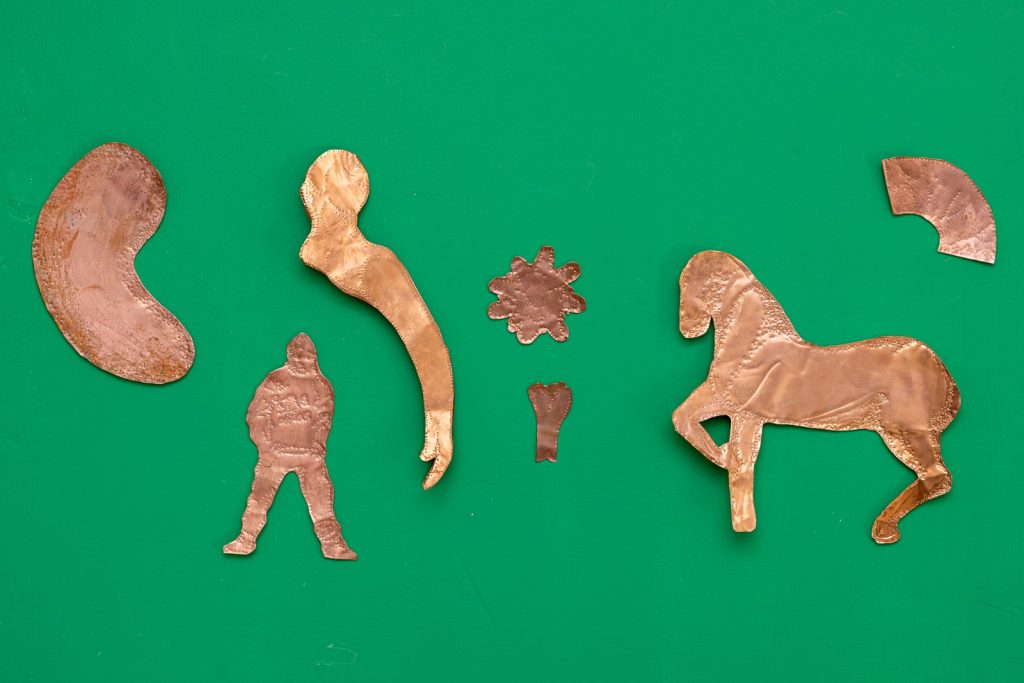
Eliyahu, born and raised on Moshav Mesilat Zion, first addressed the experiences of his parents’ generation in the fresco The Planters’ Dance (2016), in “Intricate Affinities: Reflections of Western Tradition in Local Contemporary Art,” at the Petach Tikva Museum of Art (curated by this writer). Eliyahu used a medium usually identified with churches, palaces, and large socialist murals to speak about the early years of settlement in the 1950s, when newly arrived immigrants were directed to moshavim [semi-collective farms]. This chapter in Israel’s history did not become part of its heroic ethos.
“Threshold” (2020), at the Wilfrid Israel Museum of Asian Art & Studies (curated by Shir Meller Yamaguchi), was based on archival photographs of Cochin Jews in Israel. “Copper Wing” at the CACR (2022), floods the erasure and repression of Jewish Indian culture in Israel, referring to changes in recent years, as a new generation of activists began highlighting the cultural qualities their parents brought with them and their place in contemporary Israeli culture. The exhibition is part of a long-term community building process parallel to the artist’s internal, personal journey.
Exhibiting “Copper Wing” in Ramle, a world city, is an integral part of the project’s essence, creating a nexus of complex and relevant issues of community and local identity, multiculturalism and the individual and collective processing of the link to place. It illuminates the disparity between the absent, often one-dimensional view of Indian culture formed among Israeli tourists and between the contemporary and historical cultural richness that the Indian immigrants brought with them to Israel, yet which has remained until the present on the margins of Israeli culture.
